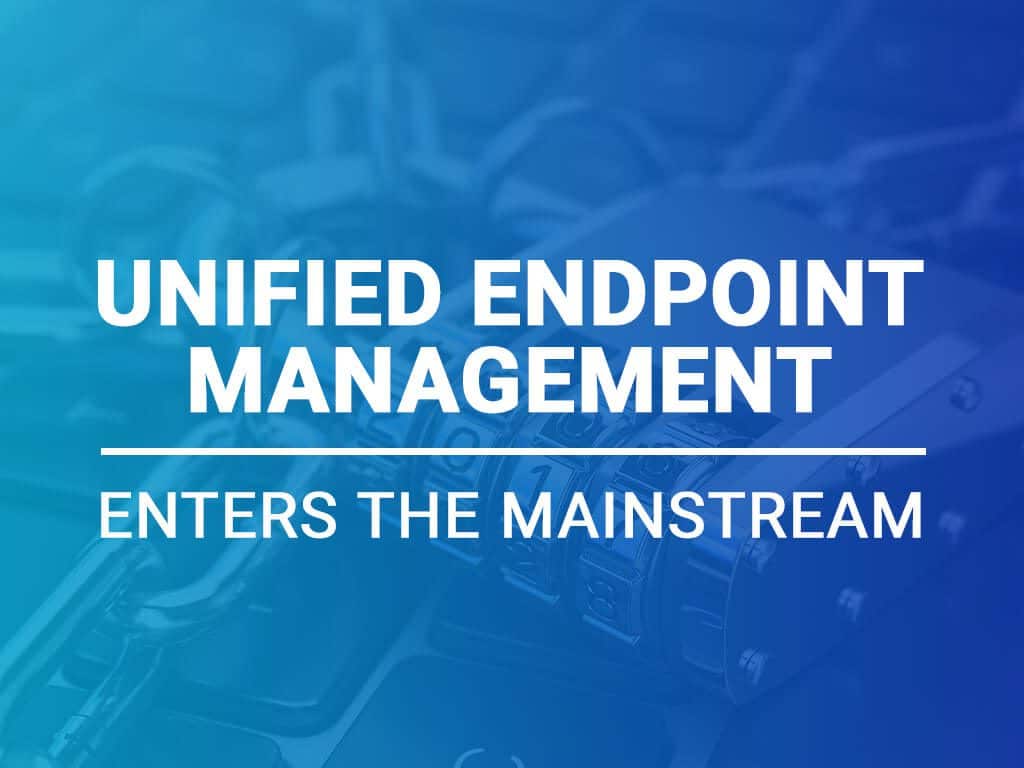
Unified Endpoint Management Enters the Mainstream
Once upon a time, there was anti-virus. Then anti-spam, adware, malware protection, ransomware protection, mobile device protection, and on and on. As new threats appeared, the vendor community came out with a fix.
According to Gartner, the big trend these days is to bring all, or many, of these tools together in one integrated package. Known as Unified Endpoint Management (UEM), Gartner analyst Dan Wilson says UEM is entering the mainstream. It has achieved a market penetration of between 20% and 50%, depending on the vertical and the size of the organization.
“Unified endpoint management (UEM) tools provide agent-based and agentless management of computers and mobile devices through an employee-centric view of endpoint devices running Windows, Google Android and Chrome OS, Apple macOS, iPadOS, and iOS,” said Wilson. “UEM tools apply for data protection, device configuration and usage policies using telemetry from identities, apps, connectivity and devices. They also integrate with identity, security and remote access tools to support zero trust.”
In essence, UEM consolidates a disparate collection of tools to bring greater simplicity to endpoint management. It streamlines a great many manually intensive tasks and processes across multiple devices, platforms, and operating systems. And the field continues to evolve. Beyond unified management of a few tools, it is heading more closely towards complete integration of identity, security and remote access services while beginning to a role in support for zero-trust security initiatives. Further, analytics, machine learning, and Artificial Intelligence (AI) are also gradually being incorporated to further the goals of end-to-end automation of scanning, deployment of agents, software, updates, and patches, and remediation of threats and other issues. This not only reduces IT overhead, it helps to improve the overall employee experience while greatly improving the organizational security profile.
Gartner listed some of the advantages:
• Location-agnostic endpoint management and patching.
• Enabling the anywhere workforce.
• Reduced total cost of ownership (TCO) of managing endpoint devices.
• Simplification of device management and support processes.
• Reduced security risk through support for more device types and OSs
• Enhances policy management.
• Integration with identity, security, and remote access tools.
“IT looks to simplify and streamline endpoint deployment, management and patching to enable provisioning of new devices for remote employees, improve device performance and reliability as well as visibility across the endpoint estate, and reduce security risk,” said Wilson.
Market Evolution
There are signs, though, that the market is evolving yet again. Two distinct branches are appearing.
• UEM tools focused on endpoint management and bringing together a diverse range of tools.
• Unified Endpoint Security to unify multiple security tools under one umbrella.
Syxsense Enterprise takes things a stage further. It unified UEM and UES to create the world’s first Unified Security and Endpoint Management (USEM) solution, delivering real-time vulnerability monitoring and instant remediation for every single endpoint in your environment, as well as IT management across all endpoints. This represents the future of threat prevention as it brings everything needed for endpoint management and protection onto one console. Breaches can be detected and remediated within a single solution. The Syxsense platform can scan for all vulnerabilities on any device, block communication from an infected device to the internet, isolate endpoints, and kill malicious processes before they spread. It can automatically prioritize and deploy OS and third-party patches to all major operating systems, as well as Windows 10 feature updates. IT and security teams can use Syxsense Enterprise to collaborate on the detection and closing of attack vectors. It offers management, control, and security for any and all desktops, laptops, servers, virtual machines, and mobile devices.
For more information, visit …







